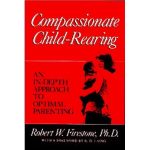Discipline

One of parenting’s most challenging opportunities
Often in circumstances where it is necessary for a parent to discipline a child, the parent’s own anger or frustration comes through in lieu of healthy guidance and direction. At these times, we hear words we never thought we’d say coming out of our mouths: “Because I say so!” “If you don’t do it, you are going to be in big trouble!” “Get out of my sight!” “You’re driving me crazy!” Here we are, trying to get our kids to control their actions, and we are feeling out of control ourselves. We need to shift our focus from our over-reactions to our children and to what’s going on that might be causing them to act out. How does a parent shift from being effected negatively by their children to having a positive effect on them?
How to calm down:
Experts recommend that when adults have problems handling their anger toward children, they give themselves a period of time to cool off. Parents can take a “Time Out,” too. By stepping back from the interaction with the child and slowly counting backwards from 20 to zero, the parent can calm down. They can then distract the kid with some other activity, or if he is still upset, they can temporarily leave him in someone else’s hands. Later on, parents can think about why they were so angry and examine the emotions their children triggered in them. By gaining insight into their over-reactions, they can better understand themselves as people and develop as parents.
There is never a circumstance extreme enough to warrant physical discipline of a child. Parents can effectively teach a kid right from wrong without resorting to hitting, spanking, beating or violently shaking the child. Adults who are assertive and powerful in their own lives can effectively stop their children’s annoying behaviors with words.
Discipline and punishment should never be reflective of parents’ mood swings. Parents must be sensitive to the fact that when adults get angry, kids perceive them as big and frightening. When an adult’s anger toward a child gets out of control, the child experiences the intensity of the anger as being life-threatening. At these times of extreme stress, with no other options available for coping with the parental threat, kids react by disconnecting from themselves. This type of disassociation causes the most serious damage to the psyche of a person.
How to discipline a child:
Discipline should not be regarded as a psychological penal system whose purpose is to punish a child for being bad. Discipline should not serve as a form of punishment at all but should operate as a form of teaching. The root word of discipline is “disciple: to follow a leader or role model.” The purpose of discipline is to help teach a child to be the kind of person who likes him/herself, as well as the kind of person that other people, including the parents, like, respect, and enjoy being with. When disciplining children, the focus of the adults should always be on teaching their children. There are several important lessons to teach children when disciplining them.
While disciplining a child, it is very important to make the child aware that the parent is angry at the child’s behavior, not at the child. The parent must make a clear distinction between the child and the child’s behavior. The child must realize that when the parent dislikes a child’s behavior, it does not mean that the parent dislikes the child. By making this important distinction, the parent is conveying that the child is not essentially a bad person. Rather it is his/her behavior, which the child can be change, that is unacceptable.
If children are acting out toward other kids, try to help them put themselves in the other child’s position and see how they made them feel. Help your kids relate to the feelings they would feel if they were in the other child’s position. This will help the child develop emotional intelligence. Just telling kids to say sorry will not teach them to feel remorseful, but thinking about how they would feel does.
When the child responds to the discipline and stops the negative behavior, the sensitive parent responds appropriately to the change in the child’s mood and behavior. The parent’s angry feelings are naturally altered and the parent feels positively toward the child. At this point, it is valuable for the adult to commend the child for responding to the discipline. The child will feel supported and cared for by the parent.
After the child’s negative behavior has been controlled, it is valuable for the parent and child to discuss what happened. It is important for the child to understand why he/she was being disciplined otherwise he/she will learn nothing from the interaction. Both parent and child can have a calm, reasonable conversation about what the child did and why the parent was angry at the behavior. The parent should be friendly and caring in the conversation. He/she should explain what he/she objected to in the child’s behavior. The parent should not harbor any vindictive feelings toward the child. The parent shouldn’t labor the point. Once it is clear that the child understands why he/she was disciplined, the conversation should move on.
Finally, after the child has been disciplined, the adult should reassure the child that he/she is not bad. A child should never go away from a disciplinary interaction feeling that he/she is a bad person. Parents should be affectionate with the child. They should tell the child that he/she is a good kid. Parents should explain to children that it is never appropriate to hate one’s self for wrong-doing: Why hate yourself? It isn’t you that is being criticized. It is your behavior and that can be changed!! Therefore, the appropriate reaction to discipline or criticism is obvious and simple: change your behavior in the future.
How to help a child change their negative behavior:
For many parents, the disciplinary process ends when the negative behavior ends. However, these parents are stopping short and missing out on a valuable part of the disciplinary interaction between adult and child. At this point, parents have the opportunity to teach their child the most. Therefore, this can be the most beneficial and constructive time for child.
Once the child realizes that he/she can change the behavior being criticized, the parents can help the child plan how to go about changing it. Now that the episode is over, the parent and child can discuss the incident with compassion and objectivity. They can review what happened leading up to the child’s misbehavior as well as the misbehavior itself. Together they can lay out a plan for a different course of action when similar situations occur in the future.
At this point, it is important for the parent to explain to the child that there is a difference between feelings and actions. There are no restrictions on what a person feels. People have the right to whatever feelings they have. There are no bad feelings, no unacceptable feelings, no hurtful feelings. However, people are responsible for their actions. People do not have the right to act freely when their actions hurt themselves or other people.
Therefore, when a parent and child are planning a different course of action for the child’s behavior, it is best for them to address the child’s feelings and actions separately. First, they must freely explore the child’s feelings and emotions. Then they must focus on controlling the child’s actions.
Exploring feelings:
The parent and child can begin by reviewing the incidents and emotions that led up to the negative behavior. Parents should encourage children to be as specific as possible about their feelings. When a child speaks of feeling bad or angry or sad, ask what did that feel like? Did you feel frustrated, humiliated, provoked, misunderstood, paranoid, or jealous? Why do you think you felt that way? Have you had those feelings before? Often? Do they typically precede your negative behavior?
Parents can ask children to describe the feelings they were having while they were misbehaving. Again, parents should encourage children to be specific. Suggest that children say everything that comes to mind. Remind them that all feelings are acceptable. The parent can ask the child what he/she thinks of the feelings and reactions he/she had. In hindsight, do they seem like reasonable reactions to a reasonable situation? Do they seem like over-reactions? Do they remind you of other reactions you have had? Do they seem like reactions that really had to do with another situation? With another relationship? With another time in your life?
Planning Actions:
As the parent and child review the feelings and reactions that activated the child’s misbehavior, they can pinpoint the emotional triggers to be on the look-out for. In the future, by spotting these emotional triggers early, the child can choose not to act on the feelings, thereby heading off the negative behavior before it erupts.
When children examine how they felt when they were misbehaving, they develop an objective point-of-view about themselves and their anger that they can refer back to if they find themselves behaving badly again. They can be reminded by the parent, “Remember, this is what you talked about not wanting to do again. Remember what you said about yourself in this type of situation when we talked?” Or they can remind themselves, “Oh, no. How did I get in this situation again? What was it I wanted to remember when this happened again?” These questions encourage children to step back and think, and not to just lose themselves in their emotional reactions and negative behavior.
The parent who shows a child how to change a negative behavior has moved beyond merely serving as a disciplinarian for the child. This parent has formed an alliance with the child and they are now on the same side, working together to change a behavior and improve the quality of the child’s life. In teaching the child how to control negative behavior, the parent is teaching the child one of life’s most valuable skills: self-control.
Related Articles:
What to Do About Tantrums and Emotional Meltdowns
What You Need to Know About Disciplining Your Child
Tantrums
Related Books:

|
 Conquer Your Critical Inner Voice Conquer Your Critical Inner Voice |
Tags: development, punishment, teaching children, teaching kids









Excellent article. I believe the fundamental component of getting along with young children is talking to them the appropriate way.